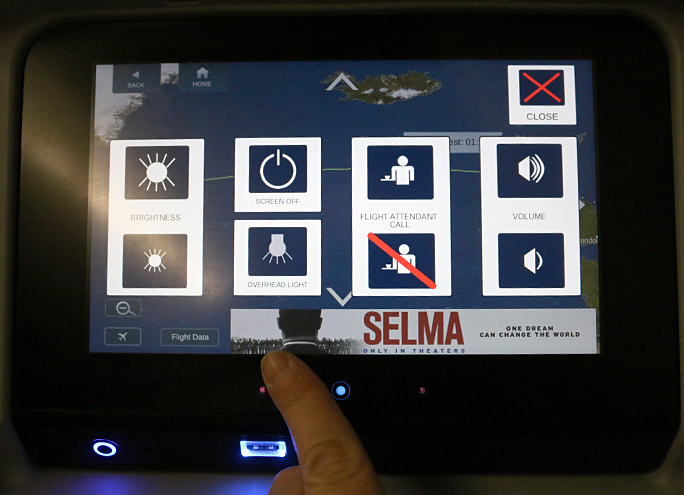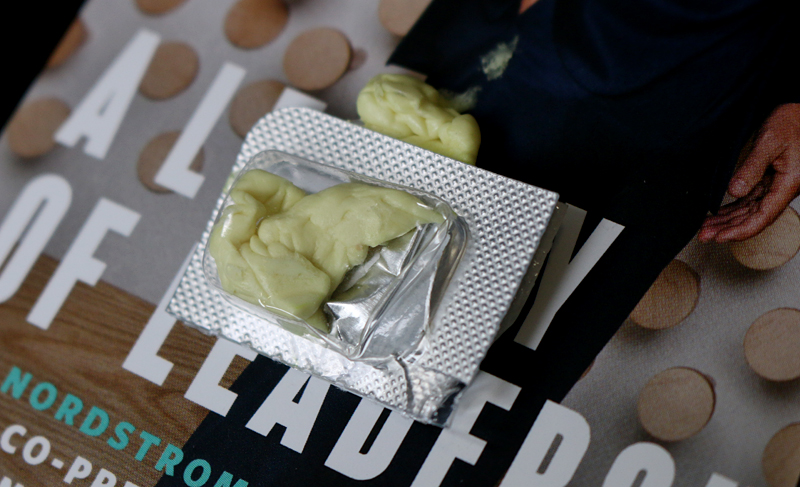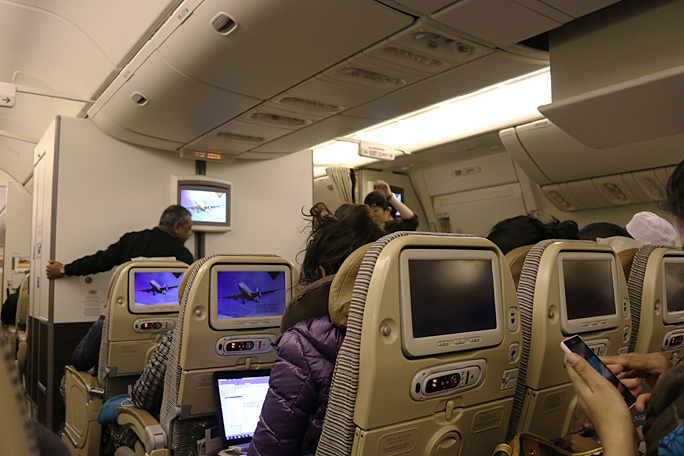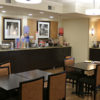D rexel Medicine provides medical care for patients in the greater Philadelphia metropolitan area; and it is associated with the reputable Drexel University and its College of Medicine; but there might be little information which is new to you in this article of 6 of the germiest places on the airplane and how to avoid them.
“Fair warning — you’ll never look at an airplane the same after reading this article.” That is how the article starts before it exposes “some of the germiest places on one of the most reliable forms of public transportation.”
Let us go through the list; and I will add my commentary.
1. Seat Pockets

Seat pockets are supposedly one of the germiest places aboard an airplane. It is where passengers store their used barf bags and soiled diapers of their babies. I personally have found soiled napkins, used tissues and the clippings of fingernails and toenails — as well as gum that has been chewed and stored without at least being first placed in a wrapper of some sort.
Fortunately, I did not find out about any of these items by directly touching them. They were stuck to the in-flight magazine which I would pull out to solve a crossword puzzle.
I rarely ever use the seat pocket on the back of the seat in front of where I am sitting — and that is only to place items such as menus or magazines or newspapers. I never use it to stow any of my belongings.
For your information, here is the official statement of what can be stowed in a seat pocket from the Federal Aviation Administration of the Department of Transportation of the United States:
The intent of the carry-on baggage regulation, Title 14 of the Code of Federal Regulations (14 CFR) part 121, § 121.589, is to prevent carry-on items from slowing an emergency evacuation and to prevent injury to passengers by ensuring items are properly restrained. Seat pockets have been designed to restrain approximately 3 pounds of weight and not the weight of additional carry-on items. Seat pockets are not listed in the regulation as an approved stowage location for carry-on baggage. If a seat pocket fails to restrain its contents, the contents of the seat pocket may impede emergency evacuation or may strike and injure a passenger.
Also, keep in mind that small items — such as eyeglasses, for example — can be forgotten by their owner upon leaving the airplane without first retrieving the items from the seat pocket.
For the aforementioned reasons and more, my recommendation is that you only use the seat pockets for anything which you can do without that is not too heavy or bulky to be stored in the seat pocket; or — better yet — do not use them at all.
2. Tray Tables

Tray tables are use inappropriately by some passengers — that is, they are used for more than simply a place on which to dine or rest your laptop computer while you work. The diapers of babies — probably too heavy for the weight the tray table was designed to handle — have been changed on them. Chewed gum has been found stuck underneath them…
…and there have been more times than I care to remember where I have opened a tray table and found crumbs or a ring of sticky residue left over by the cup of the soft drink of some passenger who occupied the seat in the past — simply because the tray table was not cleaned properly or at all by maintenance workers of the airline.
Drexel Medicine recommends that you “use a disinfectant wipe to scrub down the surface of your tray table. It’s a simple fix that should do the trick, but you still shouldn’t eat directly off of it and should avoid as much contact as possible.”
When a meal is served, it is usually on a tray with a paper lining. That is what I use on which to keep my food separated from the tray table itself — if the food is not in its protective packaging or on a plate. I have never used a disinfectant wipe to scrub down the surface of a tray table; and yet I never became sick.
3. Bathrooms

Airline lavatories are not the cleanest places aboard an airplane? Not only is that no surprise; but it is practically implied to virtually anyone who travels via airplane. “With roughly one restroom per 50 passengers, they’re one of the germiest places on a plane and a breeding ground for bacteria like E. coli.”
As recommended by Drexel Medicine, I do use paper towels when I touch the faucet and toilet seat lid — as well as anything else in the lavatory. That includes the latch and knob both when I lock the door to the lavatory and when I leave after I am finished.
I also close the lid of the toilet seat prior to flushing to prevent the spread of droplets around the lavatory resulting from the splashing of liquids in the toilet during the flush.
However, I do not arm myself with any disinfectant wipes and hand sanitizer. Again, I carry neither with me whenever I travel. Rather, I wash my hands thoroughly while in the lavatory.
One other thought: as a matter of respect for the next passenger to use the lavatory, I usually take the paper towels which I use to touch other objects and use them to clean the basin of the sink and surrounding areas of the counter. This way, the paper towels are not wasted and are completely used — and the next passenger does not walk into a lavatory where the sink appears wet and unkempt.
4. Blankets and Pillows

“Before you snuggle up with an airline pillow and blanket, think about how many drowsy, drooling passengers have used them before you. And, more times than not, these popular air amenities are reused flight after flight.”
So are the seats. So what? It is not like I am sitting naked in that seat with the pillow and blanket over me.
Bring your own is the recommendation from Drexel Medicine, as they are likely to be more comfortable anyway. While that may be true, I disagree with that statement. I never bring my own blanket and pillow in an attempt to stay clean — not to a hotel property; and not aboard an airplane — and yet I do not recall ever becoming sick as a result.
5. Touchscreen Entertainment System

“Nearly everyone who has sat in your seat before you has touched that screen and there is no way of knowing where their hands had been before that.”
I use one finger to poke at the touch screen of the in-flight entertainment system on the back of the seat in front of me — and I ensure that I perform that action as gently as possible to be as inconspicuous as possible to the passenger seated in front of me. Once I am finished, I use the lavatory to thoroughly wash my hands — and yes, I avoid touching my face at all costs until then. No hand sanitizer or disinfectant wipe is needed — although I am not sure if their constant use could potentially eventually damage the touch screen in some way.
“Try to entertain yourself with your own materials — a book, a laptop,” a portable electronic device or other item to occupy your time. I wholeheartedly agree with this statement, as I like to listen to my preferred songs while I travel.
6. In-Flight Magazines

Think about how many people have thumbed through the pages of magazines provided aboard the airplane during a flight. “The only time those get ‘cleaned’ is when a new publication comes out, which is once a quarter” — or once per month. I have even found used chewing gum attached to one magazine — but at least part of it was thankfully in protective packaging.
Truthfully, I am more concerned that the crossword puzzle in the magazine was not partially or fully completed rather than how clean it is; and I will switch magazines until I find one with a blank crossword puzzle. Successfully solving a crossword puzzle is good exercise for my brain.
Although Drexel Medicine recommends that you bring your own reading material — I do not disagree with that suggestion — “if you want to browse the in-flight publications, check them out online.” The whole point of those publications is to help you pass the time during the flight. Unless I have complimentary access to the Internet available to me during the flight, why would I want to read it on my laptop computer once I am no longer abroad an airplane?
After handling a publication provided to you while aboard an airplane as a passenger, ensure that you wash your hands thoroughly once you are finished before touching your face or your food.
Summary
You may have noticed a message which I have not only espoused within this article; but also through numerous articles I have written over the years for The Gate: wash your hands, which is the single most effective way to prevent yourself from becoming sick — and I have never wavered from that opinion.
As long as you develop a habit of properly and thoroughly washing your hands without first touching sensitive parts of your body — such as your face — your chances of significantly mitigating the possibility of you becoming ill increase, according to my years of experience.
All photographs ©2013, ©2015 and ©2016 by Brian Cohen.

